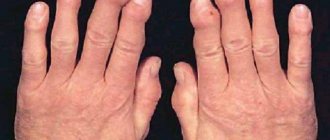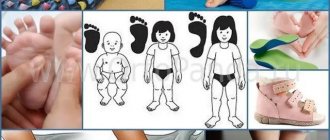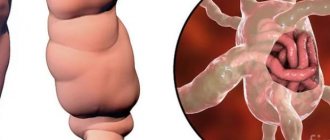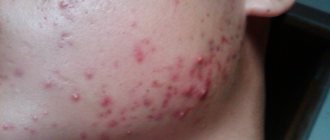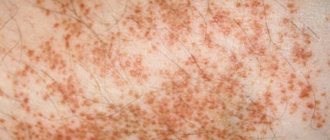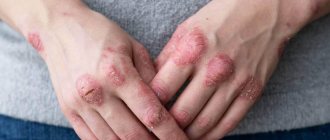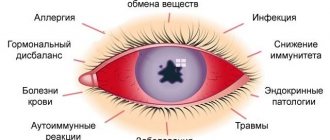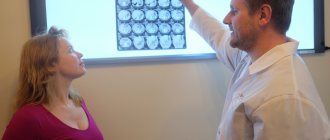The foot is one of the main parts of the body's support. Its area is about 1% of the entire body surface. However, it bears the main load, equal to the mass of the human body. The foot performs several functions: shock-absorbing, supporting, balancing. Under the influence of certain factors, its arch is subject to deformation, and a disease such as flat feet develops. As a result, the sole loses its shock-absorbing properties, which is accompanied by unpleasant complications.
Flat feet - what is it?
The human foot consists of 26 bones. They are connected to each other by joints and ligaments, the movement of which is controlled by tendons and muscles. In a healthy person, the foot has 2 arches: transverse and longitudinal. They are located in the area of the base of the toes and the inner edge of the sole. When walking, a person does not fully rest on the foot. As a rule, three points are involved: the heel bone, the area at the base of the little finger and the big toe. If the ligaments and muscles of the foot weaken, its shape begins to change. It gradually becomes flat. When walking, a person is forced to rest his sole on the surface. As a result, shock-absorbing properties deteriorate and flat feet develop. A photo of the leg deformity is presented in this article.
The arches function like springs or levers, providing comfortable movement with minimal consequences for the body. Damage to this link entails disruption of the entire system. The body, as we know, is a single whole. Any changes in the operation of one system necessarily affect the functioning of the other. Flat feet can lead to damage to the hip and knee joints and spinal deformation. If the foot cannot cope with its functions, they move to structures located above. The spine, knee and hip joints are not adapted to such a load, so they quickly fail.
Relationship between bite and human posture
– Are the teeth, their correct/incorrect arrangement, and the spine connected?
– This is an interesting question. Indeed, there is a definite evidence base for the correlation between bite and human posture. There is such a discipline as posturology, it is not entirely medical, but rather biological. Posturology speaks not so much about diseases as about variations in normal human posture. Posturological studies show that changes in occlusion due to orthopedic interventions can affect a person's posture. It is difficult to say today how much this all correlates with the criteria of health or illness. These are largely empirical and biological arguments.
Posturology, by and large, is a biological discipline about healthy people, while medicine deals with diseases. Changes in posture rather relate to the individual characteristics of a person; they cannot, at least at the current level of development of medicine, be attributed to diseases.
– Do orthodontists know this?
– Orthodontists know that changes in bite can change posture. But the next question is: what does a change in posture bring? For example, all traumatologists know that hair grows under a cast; this is an absolute biological fact. After being under a cast for a long time, quite thick hair grows on the leg or arm, usually black, this is especially upsetting for girls and young women. We don't know why this happens, but it's a fact.
– What if we put a cast in place of the bald spot?
– That was my first thought when I saw this in residency! It hasn’t occurred to anyone to do this yet; it’s technically difficult. So, we know that this pattern exists. We don’t know why it is, but we also don’t know how important it is for a person. After changing the bite, the posture changes. We don’t yet know how important this is for human health. Further research in this area is certainly needed.
Classification of the disease
The foot has two arches. Therefore, it is quite reasonable to distinguish between the forms of the disease - longitudinal and transverse flatfoot. The symptoms and treatment of each are discussed below. There is also a mixed (combined) version of the disease.
Classification of the disease by type also provides for the separation of acquired and congenital flat feet. The first case is extremely rare and is the result of abnormal fetal development. Acquired flat feet can appear at any age. It, in turn, is divided into several subspecies:
- static (occurs due to decreased muscle tone);
- rachitic (as a result of vitamin D deficiency in the body, the muscle system is weakened);
- paralytic (develops against the background of polio);
- traumatic (appears as a result of injuries and bone fractures).
Symptoms of flat feet
What signs should you pay attention to in order to prevent flat feet in time? Symptoms of this disease appear gradually. Its very first sign is considered to be severe pain in the legs at the end of a working day. By evening, the soles and legs swell and cramps appear. It becomes difficult for women to walk in heels. Due to the enlargement of the foot, you have to give up your old shoes and buy new ones, but in a larger size. Gradually, the pain syndrome spreads higher, moving to the knee and hip joints. Such signs characterize not only flat feet. Symptoms of a similar nature are observed with varicose veins. But treatment for this disease requires something completely different.
To reassure yourself, you can do a simple test at home. To do this, lubricate the soles of your feet with a dye (for example, brilliant green or iodine). Then leave an imprint on a piece of paper so that the load on your feet is even. After this, draw a line parallel to the plantar notch from the heel to the toes. Place a perpendicular line at the deepest part to the outer edge of the foot. If the imprint of the narrow part of the sole occupies at least half of the first line drawn perpendicularly, you have flat feet. A photo of an example circuit is presented below.
Making insoles
Making insoles
- custom size;
- reconstruction of the arch of the foot;
- energy-saving depreciation;
- optimal thermoregulation.
Methods for planning the production of insoles are mechanical and computer. Although mechanical methods were historically the first, today the computer method is increasingly used in modern clinics.
The mechanical method involves obtaining a cast of the foot. In the future, orthoses are made on its basis. However, the technique has one huge drawback: it does not take into account the load on the foot when walking. The impression is taken in a static body position. However, when walking, areas of overload shift, and in different ways for different people. The cut is adjusted subjectively, based on the patient’s feelings, not on objective measurements.
The computer method is more accurate. Pedobarography is performed using a special apparatus. Many parameters are assessed: the position of the direction of the patient’s center of body mass, his movement when walking. There are 5 zones of greatest load on the plantar surface:
- finger;
- metatarsal (metatarsophalangeal joints, rollover axis);
- medial middle region;
- lateral medial region;
- the heel area, which is the axial support.
Based on the results, the structure of the integral load graphs is assessed. A model of the insole for manufacturing is formed. After its production, the orthosis is adjusted to the patient, based not on his sensations, but on the data of pedobarography and photoplantometry.
The use of individual insoles allows obtaining positive treatment results after 1.5 years in 85% of patients. Their pain and muscle fatigue when walking decrease or disappear. Measurements show an increase in arch height. Further treatment can be carried out using other insoles. The examination and orthoses are made again, as the configuration of the foot changes. In a few years, in this way, a person can completely recover from flat feet, after which the need for further use of insoles will disappear.
Causes of the pathological process
Flat feet is a serious disease characterized by foot deformity. In ordinary life, no one pays attention to this defect. It is worth knowing the characteristics of the disease in order to take timely measures to correct it. The causes of the disease can be both external and internal. Considering the rhythm of life of a modern person and the disdainful attitude towards one’s own wardrobe, sometimes flat feet have a mixed etiology. Even everyone's favorite sneakers can cause foot deformation. Why? The sole of the sneakers is equipped with excellent shock absorption. They take on the entire load, fixing the heel. As a result, the muscles relax, creating all the conditions for the development of a problem such as flat feet. What flat feet are and how they arise is now clear.
Returning to the internal causes of the disease, it is worth noting a number of provoking factors. First of all, this is the presence of concomitant ailments. Among them, rheumatoid arthritis takes pride of place. It affects not only the cartilage, but also the ligaments that are responsible for supporting the foot. Injuries and mechanical damage to the leg also contribute to the development of foot defects.
Exposure to external factors can be easily prevented if you take care of your own health and carefully choose your shoes. The exogenous causes of flat feet include the following:
- excessive physical activity;
- insufficient activity due to work;
- hormonal disorders, pregnancy;
- incorrectly selected shoes.
“Is it possible to buy shoes to grow in size?”
– However, what exactly in shoes can cause harm?
– Shoes that are too big can cause harm, not globally, but situationally, for example, disrupting the rhythm of gait, or complicating a child’s life. Of course, you have to buy shoes for your child to grow into. This consideration is purely economic, because the child's foot is growing, and it is difficult to keep up with it. The question is often asked: “How long can you buy shoes to grow in size?” – there is no single answer to this question.
Just imagine that you buy shoes for a child a size larger, but children's sizes are slightly different and the proportions are different, and compared to an adult, this is more than a size larger. For example, you got beautiful shoes of size 38.5, and your size is 37. Most likely, you will not be very comfortable in them. Approximately in this paradigm we need to consider shoes for a child.
Very often you can see a picture on postcards and posters in which a little girl is standing in her mother’s shoes - her feet are pointed inward, her knees are bent - the child does this in order to compensate for the inconvenience of wearing large shoes. Or imagine the gait of a person walking on dry land wearing flippers. To control gait, it is necessary that the length of the shoe matches the length of the foot, not necessarily on the inside, but also on the outside. This very often applies to winter shoes. You probably know from your children that they don’t walk well in winter shoes, because they are big and heavy.
Shoes should not be heavy; high heels greatly increase the weight of the shoes. Shoes should not be too hard. How do people walk in ski boots? Not very confident. Imagine the feeling of a child walking in hard, high-backed boots. How much can you walk in ski boots?
- Hell!
“Little children live in approximately the same hell, for whom they put on tall, heavy shoes and a pair of socks.
Longitudinal flatfoot
With this form of the disease, an increase in the length of the foot occurs against the background of lowering of the longitudinal arch. As a result, the sole is in complete contact with the floor. The main sign of deformation is a reduction in the gap between the inner edge of the foot and the floor surface itself. Patients with this diagnosis develop clubfoot over time.
There are three degrees of longitudinal flatfoot:
- At the first stage of development of the disease, there is no visible deformation. Discomfort in the legs appears after prolonged exercise. Pain occurs when pressure is applied.
- The second degree is characterized by a change in the arch of the foot. Painful discomfort intensifies and spreads to the ankles and legs. The muscles gradually lose their elasticity.
- The third degree of the disease is characterized by pronounced deformation of the foot. Painful sensations in the legs do not go away even in the evening. Discomfort appears in the lower back, and productivity decreases. It is difficult for a person diagnosed with third-degree longitudinal flatfoot to walk in ordinary shoes.
Can flat feet be treated with insoles?
Flat feet in the initial stages, without accompanying foot deformities and without arthrosis of the joints, can be cured with the help of insoles or orthopedic shoes. Insoles should only be made to order for a specific person. They are worn at least 5-6 hours a day. The course of treatment lasts from 2 to 4 years or more. The desired result is achieved in 60% of patients. The rest show improvement, but the disease is not completely cured.
Important conditions for the effectiveness of insoles:
- ideal conformity to the topography of the plantar surface of the foot;
- the absence of areas of increased pressure on the foot, which over time can lead to structural changes in soft tissue structures;
- creating conditions for training the muscles of the arch when walking.
Custom insoles affect the degree of muscle tension, joint position, and tendon tension. They also have an effect on proprioceptive sensitivity and contribute to better control of the dynamics of the human body. Good insoles not only relieve symptoms and correct foot deformities, but also improve posture and form a correct gait.
Transverse flatfoot
With this form of the disease, the length of the foot decreases, the big toe deviates, and the middle toe becomes deformed. It takes on a hammer-like appearance. A small lump appears at the base of the first finger.
There are three degrees of transverse flatfoot. Their differences are due to the angle of deviation of the big toe.
- The first degree is mild transverse flatfoot. Symptoms of the disease appear as it progresses. The deviation of the thumb does not exceed 20 degrees. After physical activity, painful discomfort appears. On the foot, calluses are clearly visible in the area of 2-4 toes.
- With the second degree, the deviation angle is already 35 degrees. When under load, a burning sensation occurs in the sole area, and the corns increase in size.
- The third degree of the disease is characterized by constant pain. The deflection angle exceeds 35 degrees. Some patients develop bursitis. This is a disease accompanied by inflammation of the periarticular bursa.
Mixed flatfoot is considered separately. We have already discussed what longitudinal and transverse flatfoot are, and this pathology is accompanied by symptoms that are characteristic of both types. The manifestation of signs of a mixed form is distinguished by a greater degree of their severity.
Diagnostics
If you suspect that you have flat feet, you should consult an orthopedist. Initially, the doctor will definitely conduct a survey of the patient and find out what complaints he has about the condition of the feet and health in general, clarify the features of work and rest, etc. After this, he conducts an examination, during which he will evaluate not only the condition of the foot, but also the shoes. In doing so, he will pay attention to:
- the nature of the wear of the sole (normally the outer part should wear out more);
- the color of the skin of the feet (normally it should be pale pink, pallor and, conversely, a rich red color of the skin indicates circulatory problems);
- coarsening of the skin of the feet, the presence of corns, calluses;
- features of foot placement, when a person stands straight with his feet close to each other;
- the presence of deviations of the feet inward or outward;
- the presence of hallux valgus, i.e. the formation of a so-called lump at its base, which can be swollen and painful;
- flat feet;
- difficulty maintaining balance when squatting;
- gait changes.
Based on these data, the orthopedist can already diagnose flat feet and determine its type. But to determine the degree of deformation, obtain initial data for the manufacture of individual orthopedic devices and determine the most effective treatment tactics, additional examinations are required. Therefore, all patients, including children, who have signs of combined flatfoot, are prescribed:
- Computer plantography is a modern diagnostic method that allows you to obtain images of the plantar part of the foot under load. It means that the patient stands on a special instrument panel in a position that is comfortable for him. At the same time, he should evenly distribute the load on both feet. The results are assessed in accordance with the norms characteristic of each age. Children have physiological flat feet, which goes away as they grow older and develop the musculo-ligamentous system.
- Podometry is a method for diagnosing flat feet, in which the Friedland index of the longitudinal and transverse arches of the feet is determined. Normally, the longitudinal arch index is 29-31%. Lower scores indicate flat feet. The transverse index of the arch is normally no more than 40%.
- Podography is a diagnostic method that makes it possible to study the biomechanics of walking and movement patterns. To carry it out, special equipment is required, which is not available in all medical institutions. But with its help you can accurately determine all the features of gait. It allows you to study the phases of the heel roll, as well as obtain an accurate coefficient of gait rhythm.
- X-ray method gives an accurate understanding of the peculiarities of the position of the bones of the foot. This allows you to determine the degree of flatfoot, and subsequently monitor the dynamics of changes. It is from X-rays that you can accurately determine the height of the arch of the foot, intermetatarsal angles, the angle of the longitudinal arch of the foot, etc.
Sometimes electromyography is additionally performed, with the help of which the condition of the muscles of the lower extremities is assessed.
What is the difference between flat feet in children?
The foot of a child under five years of age is a fragile structure that is in the process of formation. Therefore, parents have a great responsibility. They must prevent the disease, recognize it in a timely manner and begin treatment.
Children rarely talk about health problems. Even if they try to hint, parents do not pay attention to them. Children lead an active lifestyle and are in constant motion, which is usually accompanied by fatigue. But there are certain points that parents should pay attention to:
- flattening of the arches of the feet;
- unevenly worn shoes;
- child's complaints of pain in the legs after outdoor games.
If your child’s gait has changed or he or she begins to move less, you should consult an orthopedic doctor. An experienced specialist can recognize flat feet at an early stage. The symptoms and treatment of this disease in children are practically no different from those in adults. Its only feature is the reversibility of the pathological process. The gradual maturation of the child is accompanied by a natural recovery from the disease. The foot is formed before the age of 13. During this period, it is necessary to focus on physical activity (running, walking). As a result, the muscles will begin to develop harmoniously, and the foot will acquire the correct shape.
“Insoles and shoes affect the shape of a child’s foot in the same way as a hat affects the shape of his head.”
– All parents of babies are tested by a difficult struggle between a hard back and a soft sole. Should shoes have a hard heel when a child learns to walk? Or are Western doctors right when they say that you need to walk barefoot?
– The human foot is designed for walking barefoot. Humanity has been wearing shoes in the current sense of the word for the last 500 years, probably, and in Russia it’s been like this for about 200 years. Until recently, all of Russia walked in bast shoes, they didn’t have any backs - neither high nor low - and people did not die out from flat feet .
The formation of the arch of the foot has nothing to do with shoes at all.
At the Galen Clinic we use ancient Greek statues as an example: the ancient Greeks did not have shoes! Look how beautifully formed their feet are! The arch of the foot is a genetically programmed element of its anatomy. Biologically, the foot is adapted only to walking barefoot
One of the great modern American podiatrists said: “Insoles and shoes affect the shape of a child’s foot just as a hat affects the shape of his head.” That is, no way! It is definitely impossible to change the shape of your feet for the better with shoes!
Where did this high back story come from? There was an empirical postulate that if you set a certain pattern for the growth of the foot in the form of a high heel or arch support, then the foot will develop along this pattern, but this has not been confirmed by any research.
To roughly imagine the analogy, we can recall the story of mustard plasters and jars. If 30 years ago a child started coughing, a pediatrician would come to him and prescribe him mustard plasters or cups, or both. If now a pediatrician comes to your coughing child and prescribes mustard plasters or cupping, then next time you will call another pediatrician.
You don’t wonder why mustard plasters or cans disappeared. But they disappeared because their effectiveness has not been confirmed by anything, and 30 years ago this effectiveness was not discussed at all; it was a priori believed that mustard plasters and cups would be useful for a coughing child. Medicine is changing, it is changing based, first of all, on the principle of evidence.
If you look at your palm, you will see that there is a notch on your palmar surface, the so-called “arch of the hand.” Have you ever worn gloves with high, hard cuffs? No? How did your hand form if you never wore hand supports? Where did you get this dimple on your hand? You are evolutionarily programmed to have it. The size of this notch is different for everyone. I have it a little more, you have it a little less.
Little of! As a rule, if we put a hard glove on a hand (as my colleague cites in the article), we will significantly worsen the function of the hand, for example, in a hard glove you will not be able to draw or sculpt.
It's highly likely that I have a slightly larger arch than you. It is possible that you have a tendency to flatten the arch of your feet, do you personally?
- Maybe. And children have it.
– Children have a slightly different story. When children are born, they have two fat bodies: one on the cheek to facilitate sucking, the so-called “Bishat fat pad”, the other is the fat pad on the foot, this is a built-in arch support that gradually dissolves. If you look at a newborn baby's foot, it is slightly arched and springy. And this “built-in arch support” is not needed to form the arch of the foot, the arch of the foot is formed according to other laws, it is needed to soften the load. If this lump experiences excessive pressure, it may dissolve faster.
But there is a nuance regarding arch support in shoes. Can you imagine a car steering wheel? When you take the steering wheel, it is more comfortable for you when it is not smooth, but has a texture on it. It follows the shape of your brush. It’s a similar story with shoes – the most comfortable shoes are those that, to one degree or another, follow the topography of your foot, so good, comfortable, convenient shoes always have a plantar surface lining. There, as a rule, there are instep supports. The same applies to sports shoes, on which the result of competitions largely depends - they always have an instep support. But not so that the athlete’s arch is formed, but so that the foot feels as comfortable and stable as possible.
There is one more nuance. In children under three years of age, foot propulsion is not sufficiently developed. Children under three years old walk as if waddling. There is an English word that is typical for children from one to two - two and a half years old, this word toddler, roughly translated as “stomper,” that is, a child who does not yet walk confidently. There is no single word in the Russian language that would describe such a gait. In these children, indeed, due to their age, the function of the ankle joint is not yet sufficiently formed.
I call this gait “bear-toed.” Slightly waddle, swaying from side to side
So these kids, at least in theory, have some justification for wearing taller shoes to improve stability. If a child walks unsteadily barefoot or in low-backed shoes, and you put high-backed shoes on him, and he walks more steadily in them and falls less, then for this situation there is at least some biological basis for high-backed shoes - for situational improvement of resilience. The maximum when this is biologically necessary is up to three years.
Unfair marketing tactics
– So, it’s all the same as with cans and mustard plasters? But orthopedic shoes are expensive!
– I wouldn’t like to suspect someone of using some dishonest marketing tactics, but when I come to the store to buy shampoo for myself, and there are two shampoos next to me – one regular, inexpensive, and the other for preventing hair loss – and I have small problems – my hand will reach out to the one for improvement, this is psychology. Although, as a doctor, I understand that it does not improve anything, because if it were so, then the balding male half of humanity would not suffer from complexes.
I completely agree! Orthopedic shoes are needed for children with orthopedic pathology! Nobody prescribes glasses for prevention! Here is another article on our website https://www.galen.by/articles/46-pervaya-obuv-rebenka
So my mother comes to the store to buy shoes, and next to them there are two pairs - one pink, light, comfortable - ordinary, and next to them - shoes that are tall, heavy, scary and expensive, but it says on it that they are for the prevention of flat feet.
Most likely, the hand of a modern Internet-addicted mother will reach for those shoes on which it is written that they are preventative. Consciousness works like this: I want to do everything for my child before it’s too late. This hypothetical “before it’s too late” concept works very well. This is a large marketing niche where consciousness can be manipulated.
And in general it is a question of trust. If, relatively speaking, in Finland a doctor tells a patient that this and that needs to be done, then the patient does it. If in Russia a doctor says that something needs to be done, then 99% of patients, especially mothers, will go online and double-check his opinion. Is it true?
- Certainly!
– Your answer “of course” is very revealing. I'm not even talking about the degree of mutual distrust, this does not concern anyone personally, this concerns the atmosphere. The degree of mistrust in society is too great.
– By the way, now a lot of things are passed from child to child, this is in any country, including shoes. Is it normal to wear shoes after having another baby?
– Shoes are clothes for the feet and nothing more. When you buy panties, do you go to the doctor to consult? Sorry for the question. Probably not. And there are so many fancy things with shoes!
And everything is very simple, shoes are clothes for the feet. The criteria for choosing shoes for children are simple - comfort, lightness, beautiful appearance and true to size.
If you take shoes anywhere, even from a trash heap, and they meet these criteria, then do what you want with basic hygiene. In Russia, and not only in Russia, it is customary that from generation to generation the younger ones wear after the elders, including shoes. Therefore, there is no need to complicate simple things.
Medical examination
Flat feet in adults and children can be determined based on the clinical symptoms of the disease. To assess the extent of the pathological process, a serious examination of the patient is required. It includes several points. This:
- Plantography allows you to determine the severity of the pathological process using prints. To do this, a solution of methylene blue is applied to the feet. Then make prints on a blank sheet of paper. Plantography provides approximate data on the condition of the arches of the feet.
- The Friedland podometry method allows you to estimate the percentage of foot height to its length.
- The clinical method is based on the construction of a special triangle. Its base is equal to the distance from the head of the metatarsal bone to the tubercle of the heel. The vertex of the triangle is located in the center. The first leg reaches the highest point of the heel tubercle, the second - to the head of the metatarsus. Normally, the height of the arch should not exceed 60 cm.
- The X-ray method is also based on constructing a triangle, but in this case the angle at the apex is measured. This parameter should not exceed 130 degrees.
Based on the examination results, the orthopedic surgeon can confirm the diagnosis and make recommendations for treatment.
Do people with flat feet join the army? This question worries many young men who have reached adulthood. If a conscript is diagnosed with a 1st or 2nd degree foot deformity, he is required to serve in the armed forces. In case of longitudinal or transverse flatfoot of the 3rd degree, the young man is exempt from the army. He is given a military ID from Fr.
Principles of treatment
Many people do not pay attention to flat feet and ignore the first symptoms. In fact, this is a rather serious and rapidly developing pathology that is practically untreatable. It can be completely cured only in childhood, when the foot is not yet fully formed. In adults, therapy is aimed at slowing the development of the disease and preventing complications. Treatment of the pathological process is complex. The patient's muscles are strengthened, pain is eliminated, and progressive longitudinal/transverse flatfoot is stopped. The symptoms and treatment of these types of disease are practically the same. Now let's look in more detail at modern methods of therapy.
Medicines in combination with physical therapy help eliminate pain. Patients are prescribed systemic analgesics (Ibuprofen, Aspirin), as well as ointments for topical use (Dolgit, Voltaren).
The basis of therapy is therapeutic exercises. A set of exercises is selected by an orthopedist taking into account the stage of the disease and the patient’s age. A foot massage has a good healing effect. Regular procedures help normalize blood circulation and increase muscle tone. Unfortunately, all of the above treatment methods are effective only at the initial stage of the disease. For severe foot deformities, only one option helps - surgery.
Treatment of this disease in children requires a different approach. Most often, young patients are diagnosed with longitudinal flatfoot (all parents should know that such deformity cannot be ignored). The pathology is highly treatable if detected early. The child's bones, ligaments and muscles are susceptible to conservative therapy. Exercise therapy and massage have a positive therapeutic effect. If a child has congenital flat feet, they begin to be treated from the very first days of life. For this purpose, special bandages and splints are used.
Conservative treatment of hypermobile planovalgus foot.
In most cases, this condition is completely asymptomatic. The arch of the foot is restored as the child grows older. If pain occurs, it is recommended to wear orthopedic insoles and orthopedic shoes. If shortening of the Achilles tendon is detected, stretching exercises are recommended.
If conservative measures are ineffective, surgical treatment is indicated. If the main problem is shortening of the Achilles tendon, lengthening plasty is performed. In rare cases of persistent pain, a calcaneal lengthening osteotomy (Evans osteotomy) may be required to correct forefoot abduction. A medializing sliding osteotomy of the calcaneus may be required to correct hindfoot valgus. If there is excessive supination, a plantar wedge osteotomy of the first wedge may be required.
Why is flat feet dangerous?
The human body works as a whole. There are not only anatomical, but also functional connections between all organs. With flat feet, a shift in the center of gravity occurs. To maintain balance, a person is forced to constantly deviate in the opposite direction. Over time, the deformation increases, and the back becomes noticeably rounded. Poor posture and flat feet have similar causes of development. This is weakness of connective tissue, muscles, and obesity. In a healthy person, the arch of the foot acts as a shock absorber. With flat feet it is lost. As a result, increased stress is placed on the spinal column and knees. This leads to even more severe curvature of posture, scoliosis.
Foot deformity can provoke the development of other specific complications, including:
- ingrown nails;
- curvature of fingers;
- heel spurs;
- dystrophic changes in the legs;
- clubfoot.
In children with this diagnosis, the shock absorption of the foot is also impaired. As a result, the vibration of the body when moving is transmitted to the legs and spine. Constant irritation of the joints leads to inflammation, and arthrosis develops. The effect of flat feet on the spine is reflected in its curvature. The child constantly suffers from pain in his legs and head, his ability to work and his performance at school decreases.
Prevention of disease in children and adults
To prevent the development of flat feet, it should be periodically prevented. First of all, doctors recommend paying attention to shoes. Today, in almost every store you can buy special orthopedic shoes and insoles. The range of similar children's products is amazing in its diversity. Do not forget that shoes and insoles cannot correct foot deformation. They only prevent its development.
To strengthen muscles, it is useful to do contrast baths. It is necessary to alternately dip your feet in basins with cold and hot water. In addition, regular consumption of vitamins in their natural form (A, E, C, D) and microelements (including copper, selenium, calcium) helps strengthen muscles.
Prevention of flat feet in children can begin with increasing physical activity. Martial arts, skiing and horse riding are considered beneficial. In summer you can walk barefoot on mown grass and pebbles. Such daily walks have a positive effect on the motor skills of the small muscles of the foot.


